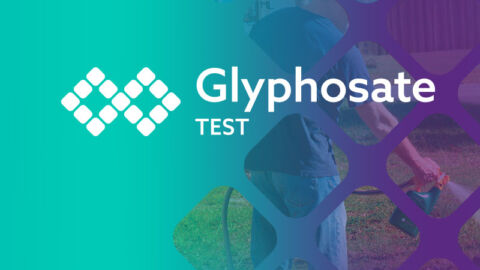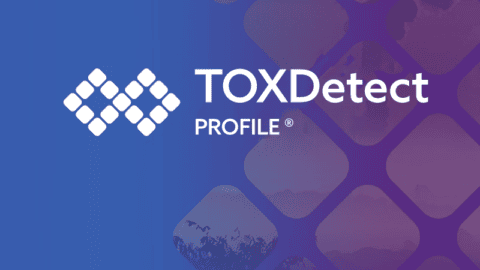Mosaic EDGE (formerly GPL Academy) has been educating practitioners for over 15 years on how to help patients heal through cutting-edge testing, research and protocols. In our recent 2-Day OAT + TOX Workshop, speakers extolled the virtues of comprehensive metabolic tests like the Organic Acids Test (OAT) and the MycoTOX Profile to help with difficult-to-diagnose patients.
The participants heard ways of how to implement these tests along with other diagnostic assessments, as well as effective treatment methods.
The following Q+A is a response to remaining questions Dr. Woeller was unable to answer during his presentations.
The material contained within this article is not intended to replace the services and/or medical advice of a licensed healthcare practitioner, nor is it meant to encourage diagnosis and treatment of disease. It is for educational purposes only. Any application of suggestions set forth in the following portions of this article is at the reader’s discretion and sole risk. Implementation or experimentation with any supplements, herbs, dietary changes, medications, and/or lifestyle changes, etc., is done so at your sole risk and responsibility.
Q: Is high fatty acids due to coconut oil in the diet clinically significant? Is that showing a problem or just a false positive?
A: It is not necessarily a problem that I know of that would cause toxicity at the cellular level. But, it does point out that our cells can only take up so much lipid at any given time to function effectively.
Q: If there is a problem with medium-chain fatty acid beta-oxidation, how does that manifest in omega-oxidized organic acids? Do all of 47, 48, 49 become elevated, or is there some other pattern to 47, 48 and 49?
A: The first two fatty acids are strongly linked to ketosis, but there is a relationship with poor cellular metabolism of certain amino acids like isoleucine, leucine, and valine metabolism. Other individual fatty acids are linked to other specific biochemical pathways that can from various enzyme defects or mitochondrial problems. The biochemistry is complicated, and we go into this extensively in Module #10 of our Advanced OAT Mastery course.
Q: What of add ADHD and yeast metabolism? Is it worthwhile to be doing the testing?
A: It is important to always do the OAT for ADD/ADHD. I also make sure to do the Hair Metals Test and Food IgG MAP from Mosaic Diagnostics as initial testing too.
Q: I don’t see, Avoid Vitamin C, Tryptophan, Coffee in manual. Should this food and supplements be avoided before test and how many hour?
A: No. I do not personally have people stop their supplements prior to testing.
Q: If you have only hydroxybutyric elevated and the patient is not on a keto diet what is the cause?
A: Need for additional antioxidants. The body is most commonly pulling things into the pathway for glutathione production.
Q: What chemical pathway did you say indicates aggravation of POTS?
A: Dopamine-Beta-Hydroxylase, which converts Dopamine to Norepinephrine.
Q: Is the inflation of the fatty acids a bad thing?
A: It depends on what is causing it. There are disease states that can inflate these numbers. The biochemistry is complicated, and we go into this extensively in Module #10 of our Advanced OAT Mastery course.
Q: Would the high markers that could be associated with high usage of coconut oil be a sign of food sensitivity?
A: Not that I know of.
Q: Please explain what is meant when all detox markers are elevated. What is happening metabolically with patient?
A: Let’s focus on Pyroglutamic and 2-hydroxybutyric. If those two are elevated the patient is glutathione deficient from some toxin or toxins. The 2-hydrobutyric is linked to glutathione production or the demand for more glutathione.
Q: Any other reasons for elevated glutaric in someone taking B complex supplements and other b vitamins normal?
A: There are many, but the most common is increased need for mitochondrial support and high levels of candida toxin acetaldehyde.
Q: For patients not toilet-trained, try to capture a concentrated urine after how many hours?
A: First morning urine. The parents can have their child stand up in the bathtub and run warm water over their feet. This will usually trigger them to urination.
Q: Why is arabinose range of value on the lecture slides normal range <50? On my recent test it is <20. Did entire range get changed?
A: Range changes based on age and sex. Greater than 13 years old male and female, and less than 13 years old male and female, will have different reference ranges.
Q: How often should someone do an OAT?
A: At least once yearly as a screening assessment.
Q: Please explain again, how to interpret the nutritional markers that do not have an * (indicating possible deficiency if high).
A: The asterisk markers are only significant when elevated. If elevated, that means a deficiency of the respective nutrient. The non-asterisk markers are direct assessments. It gets tricky with NAC because levels are typically on the lower end of the scale which can be normal as NAC is converted to glutathione. Low levels of ascorbic are not valid for ascorbic acid determination since it is unstable in urine samples.
Q: How long do you have to avoid B12 supplements to get true/accurate picture of patients B12 status from MMA marker.
A: Good question. I am not sure exactly. It likely would only be a few days since B-vitamins like B12 are water soluble and the effects biochemically on the pathway linked to MM is constantly ongoing.
Q: 3 oxoglutaric acid. What is it? What is it correlated with?
A: It is an organic acid produced by various species of yeast organisms
Q: If a patient is highly positive for Aspergillus and is treated (Nystatin, N-acetyl L Cysteine, Acetyl Lcarnitine, activated charcoal, home remediation to eliminate mold) , do you expect markers to go down and what is timeframe? What is succerate?
A: Yes, the markers on the OAT should go down and could do so quickly within a few weeks. The same would be true of Succinic or other markers being influenced by yeast/mold toxins.
Q: Do you recommend following up a nutrition marker out of range with a blood test? How long refrain from supplements to get accurate test of nutrition markers on OAT?
A: I do not personally have people stop their supplements prior to testing. I typically do not have patient do follow-up blood testing for nutrients unless there was really strong clinical evidence to do so.
Q: How variable is microbial part of OAT day to day?
A: There may be slight fluctuations, but not dramatic unless there has been some massive surge in toxin production in the gut.





